
Why choose to travel by train to Laos?
Recently, flights are scarce and tickets are pricey. When I traveled to Thailand, just the airfare alone cost me over 5K. However, taking the high-speed train is much, much cheaper.
My travel philosophy has always been to save on transportation and splurge on accommodation. The money saved on travel can be spent on staying in good hotels.
Moreover, there are no direct flights from Hangzhou to Luang Prabang. Even a transfer is troublesome, so taking the train is actually more convenient.
If you’re also looking to travel abroad soon and find plane tickets too expensive, why not try my method?

Additionally, I’ve wanted to visit Luang Prabang for a long time. This place is just like how Chiang Mai, Thailand was 10 years ago.

China’s high-speed rail is unparalleled.
China aims to build a super high-speed rail network that connects the entire ASEAN region. Look at the map below; in the future, there will be high-speed trains running from Kunming to Yangon in Myanmar, Vientiane in Laos, Bangkok in Thailand, Ho Chi Minh City in Vietnam, Phnom Penh in Cambodia, and even Singapore.
The China-Laos Railway from Kunming to Vientiane is already operational, and the section from Vientiane to Bangkok will soon be completed.
In a few years, traveling to Southeast Asia by high-speed train will be cheap and convenient.
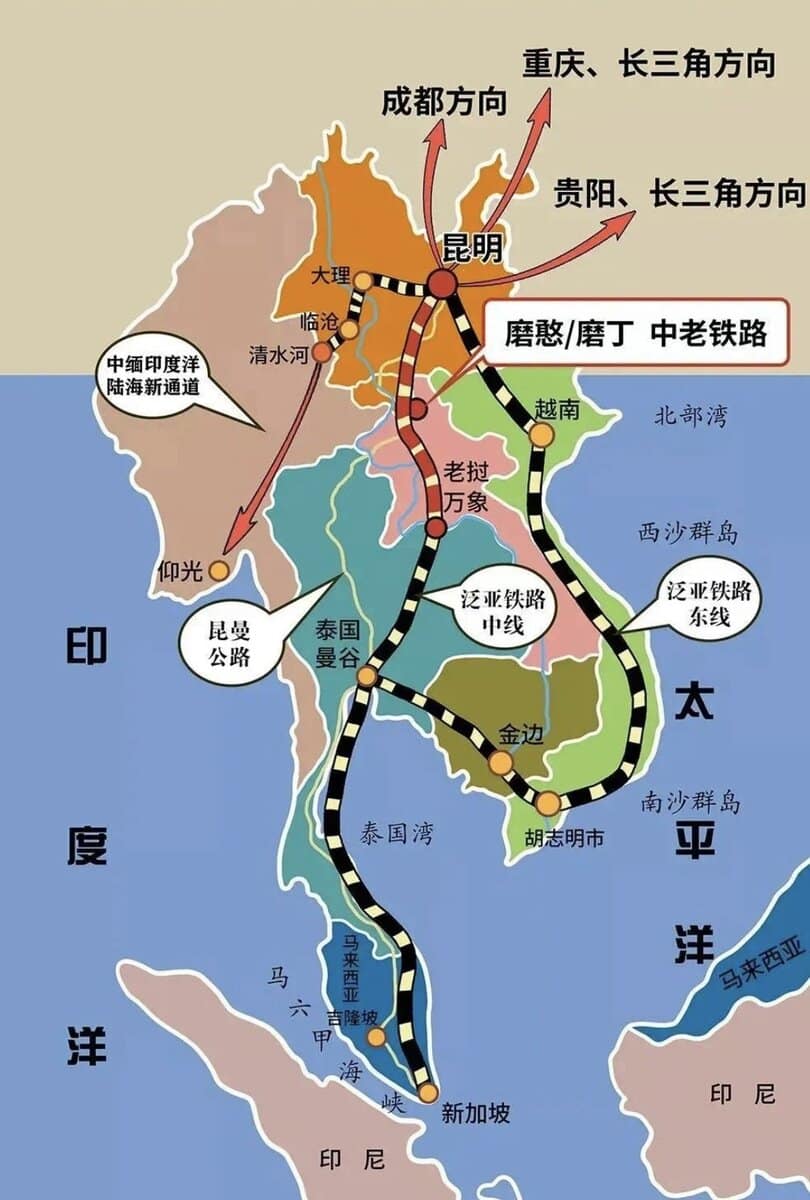
First, let me share my itinerary for this trip.
February 9: Fly to Xishuangbanna and obtain a Lao visa.
February 10: From 07:45 to 09:00, take the high-speed train from Xishuangbanna to Mohan, then cross the border to Boten. From 12:15 to 13:45, take the high-speed train from Boten to Luang Prabang.
By 2:30 PM, I was already lying on the bed at Amantaka in Luang Prabang.
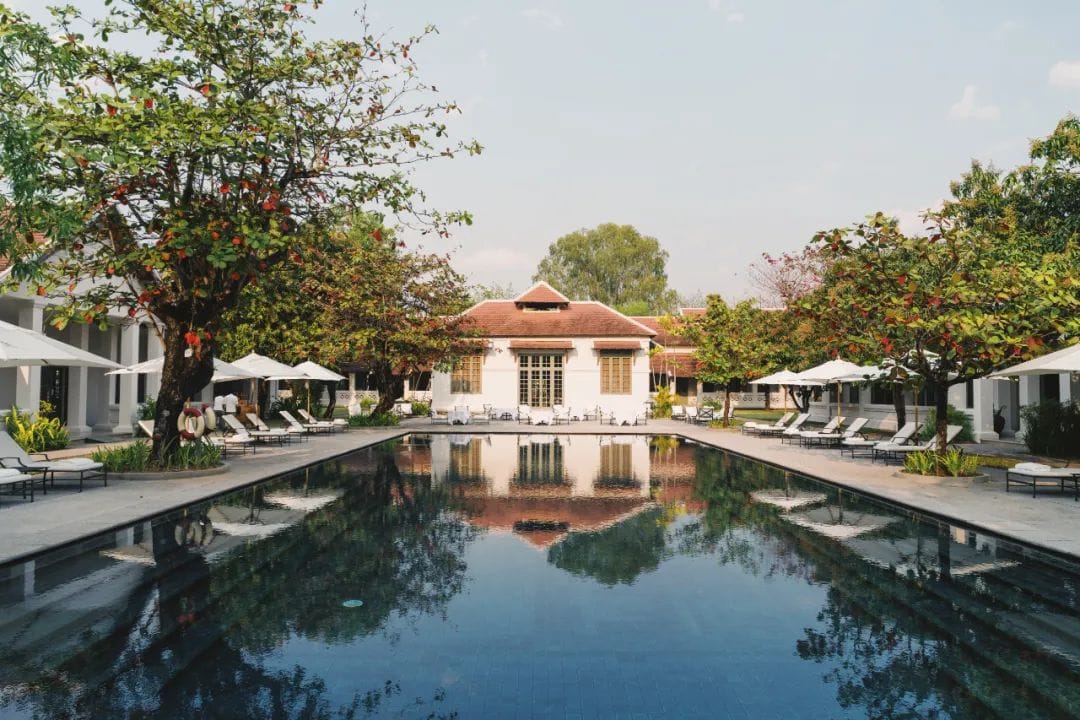
Next, I’ll provide a detailed step-by-step account of my journey. The more detailed I am, the less likely you will be to encounter issues.
1) Why did I choose to go to Xishuangbanna a day in advance to apply for a visa?
Laos offers visa on arrival, but lately, the number of people leaving through the Mohan-Boten border crossing has been exceptionally high. The queue for visa on arrival is very long, and you need to fill out forms and undergo review. It often takes 1–2 hours.
Having a pre-issued visa allows you to cross the border instantly, making it particularly convenient.
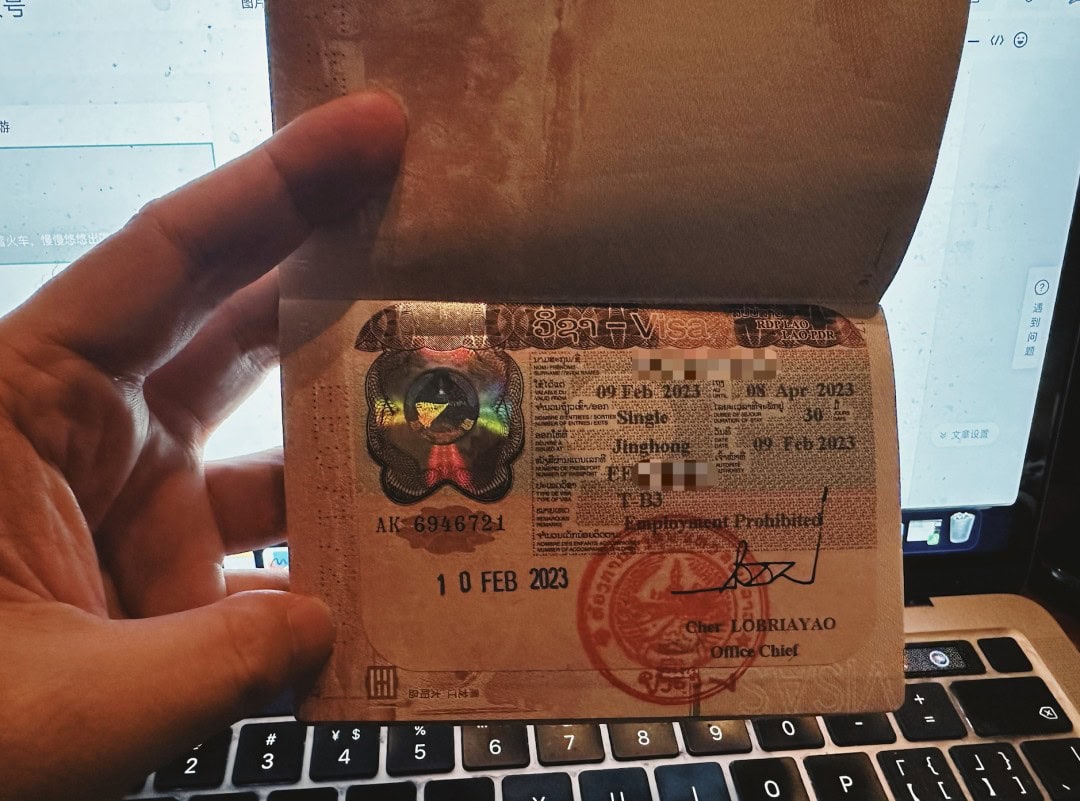
In Xishuangbanna, the place to get a Lao visa is the Lao Consulate General in Kunming’s Jinghong Consular Office (Jinghong City, Cangjiang New Area, Xuanwei Boulevard, Jiangbei Section, Gaozhuang Xishuangjing Project, Gaozhuang Xishuangjing Public Building Zone Integrated Building).
The fee is 250 RMB, and you get it instantly. You only need to bring your passport; nothing else is required. The Lao visa on arrival is 200 RMB, which is just 50 RMB cheaper but saves you time.
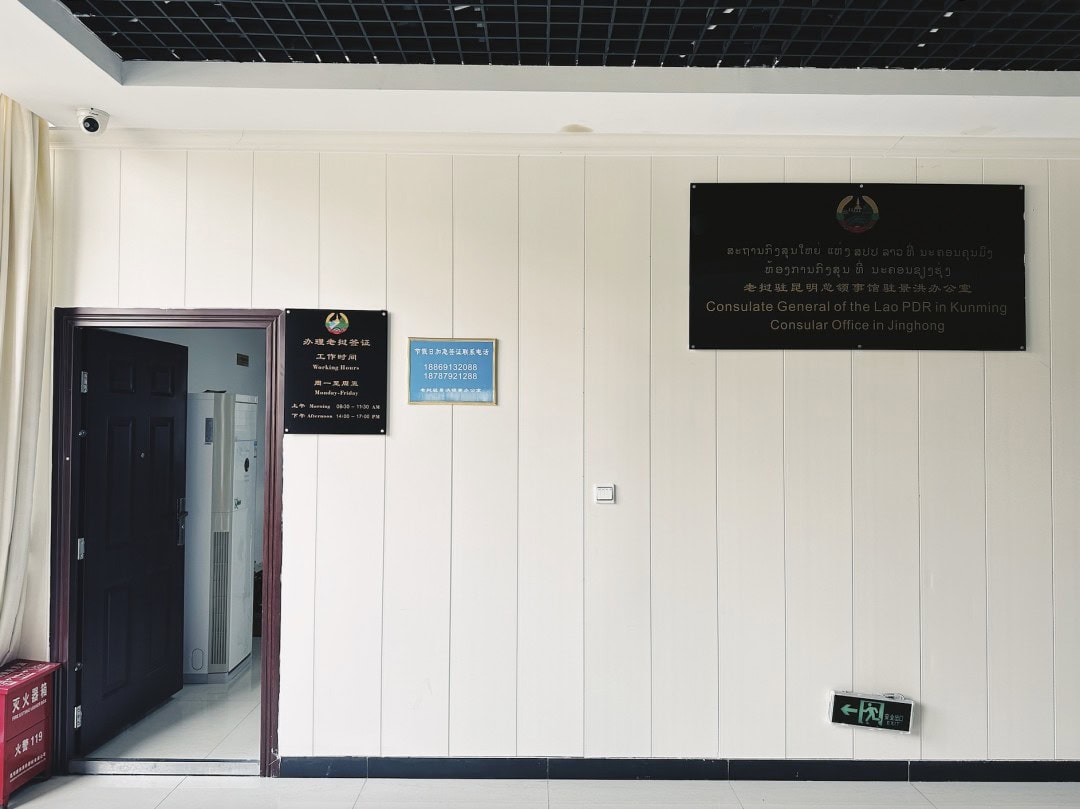
Similarly, you can also get your Lao visa processed directly in Kunming at the Lao Consulate in Century City.
Additionally, you can get a Lao visa on Taobao. The cost is slightly cheaper, but it takes some time, and mailing your passport may involve some security risks.
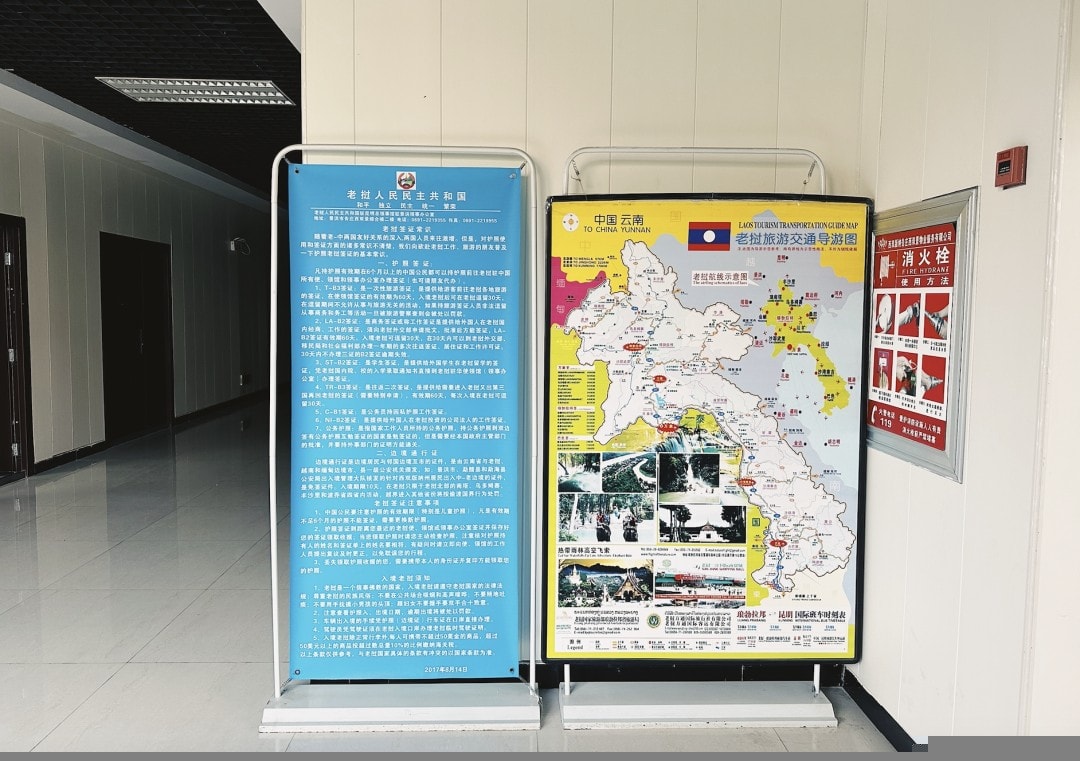
**2) How to Choose High-Speed Rail Transport**
There are three trains from Xishuangbanna to Mohan each day: 07:45-09:00, 11:36-12:43, and 18:17-19:33.
From Kunming to Mohan, there are two trains daily: 08:06-12:43 and 14:15-19:33.
From Boten to Luang Prabang, there are two trains daily: 12:15-13:45 (express) and 14:00-16:08 (slow). The time difference between Laos and China is one hour, so when it’s 7 AM in China, it’s 6 AM in Laos.
This means that the 07:45 train from Xishuangbanna can connect to the 12:15 train from Boten; the 11:36 train from Xishuangbanna and the 08:06 train from Kunming can theoretically connect to the 14:15 train from Boten.
For later trains, you may need to spend a night in either Mohan or Boten.
I am heading to Luang Prabang. If you are going to Vang Vieng or Vientiane in Laos, it’s the same logic.
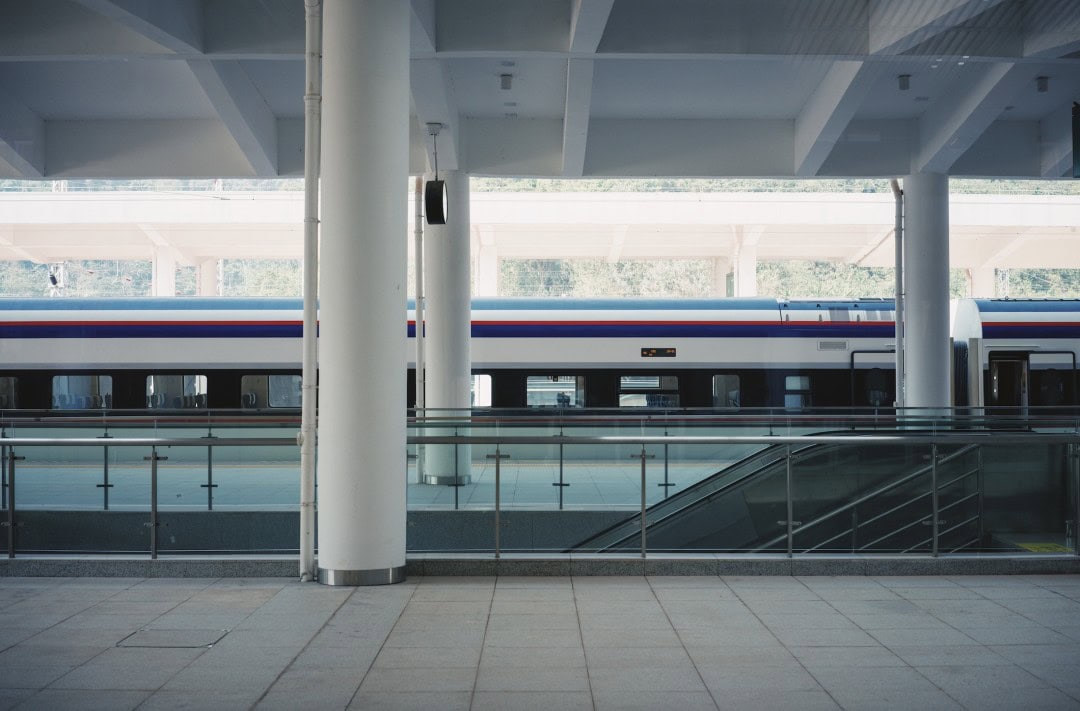
For the domestic section, you can directly purchase tickets on 12306.
For the Lao section, there is no online ticket purchase available, but you can check the Lao train schedule using the LCR Ticket app. This app has a Chinese version and is very convenient to use.
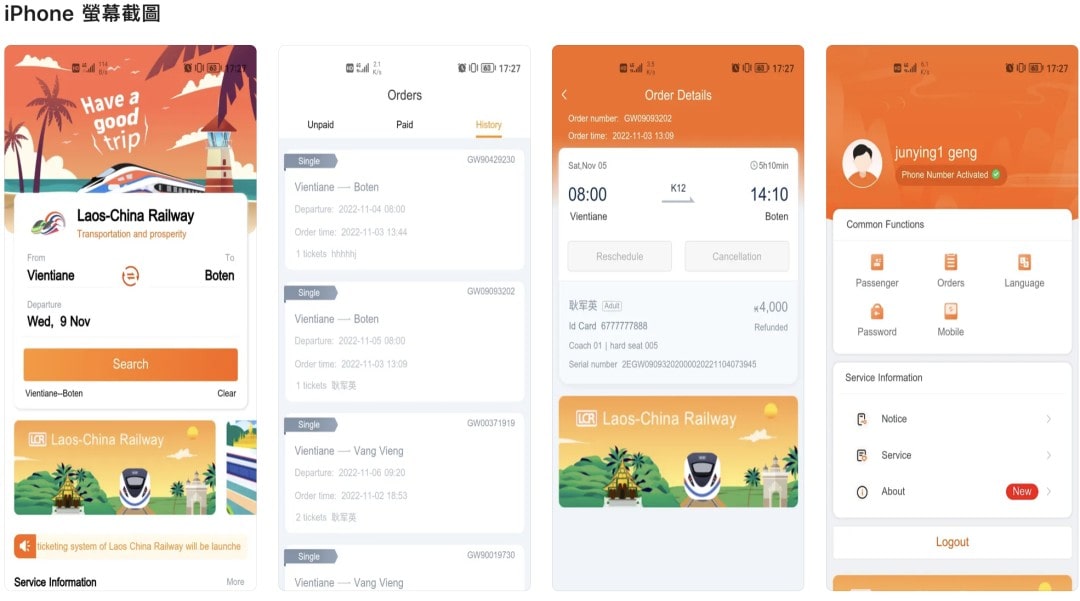
The 07:45 train from Xishuangbanna has a 100% chance of connecting to the 12:15 train, and if not, the 14:00 train (which has more slow train tickets available) will also work.
Starting from Xishuangbanna or Kunming and arriving in Mohan at 12:43: if you are doing a visa on arrival and the queue is long, you might miss the 14:00 train from Boten.
Thus, I recommend that everyone get their Lao visa in advance. Also, try to choose the 07:45 morning departure from Xishuangbanna.
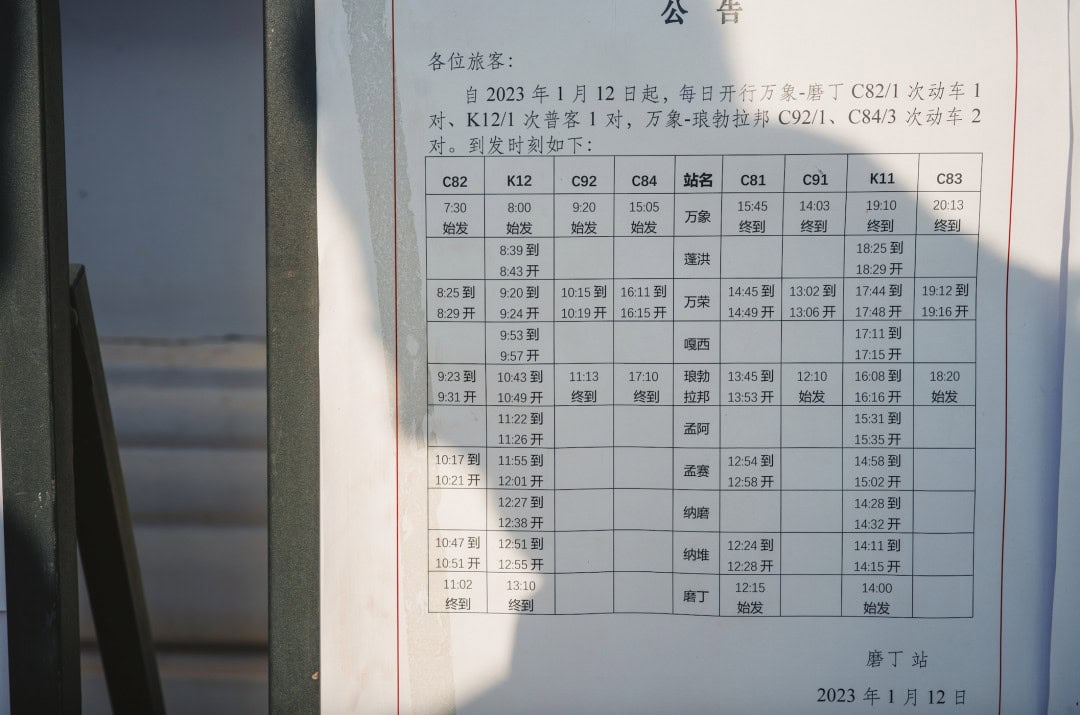
**3) Real Account**
The domestic high-speed train from Xishuangbanna to Mohan is a green Harmony EMU. At around 7:30 in the morning in Xishuangbanna, it’s still dark outside.
To reach Luang Prabang, I really had to travel night and day.
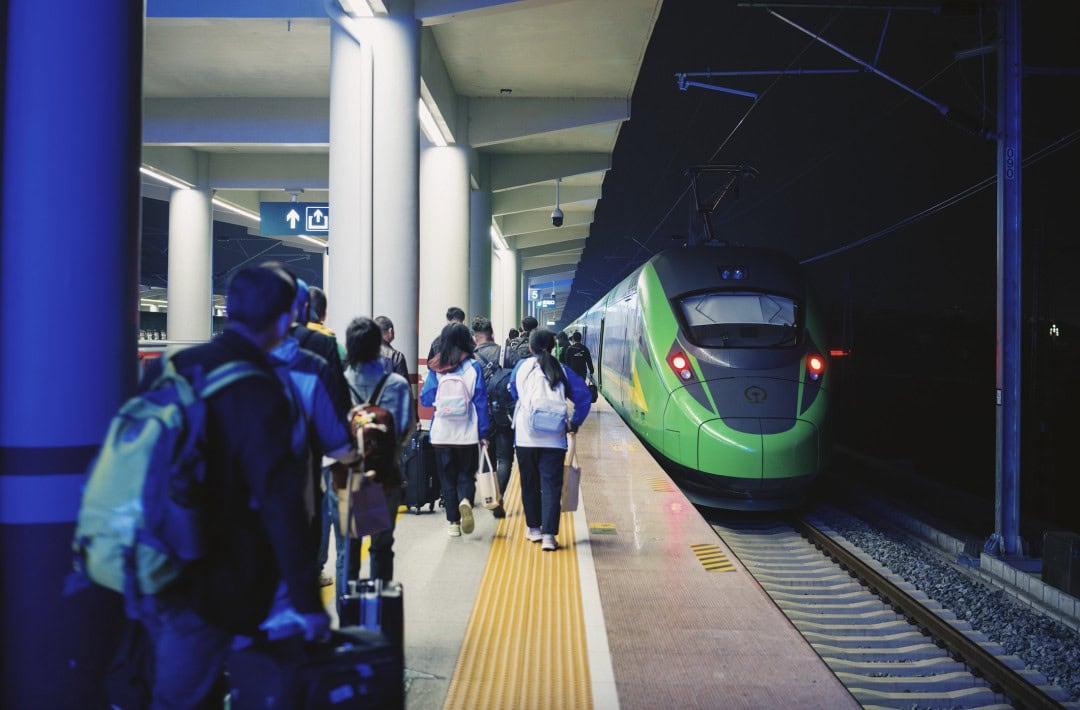
I arrived at Mohan Station at 9 PM. After exiting the station, there are plenty of shared rides at the entrance to take you to the border.
It costs about 20-30 yuan per person, and it takes roughly 10-15 minutes to get from the high-speed rail station to the Mohan border.
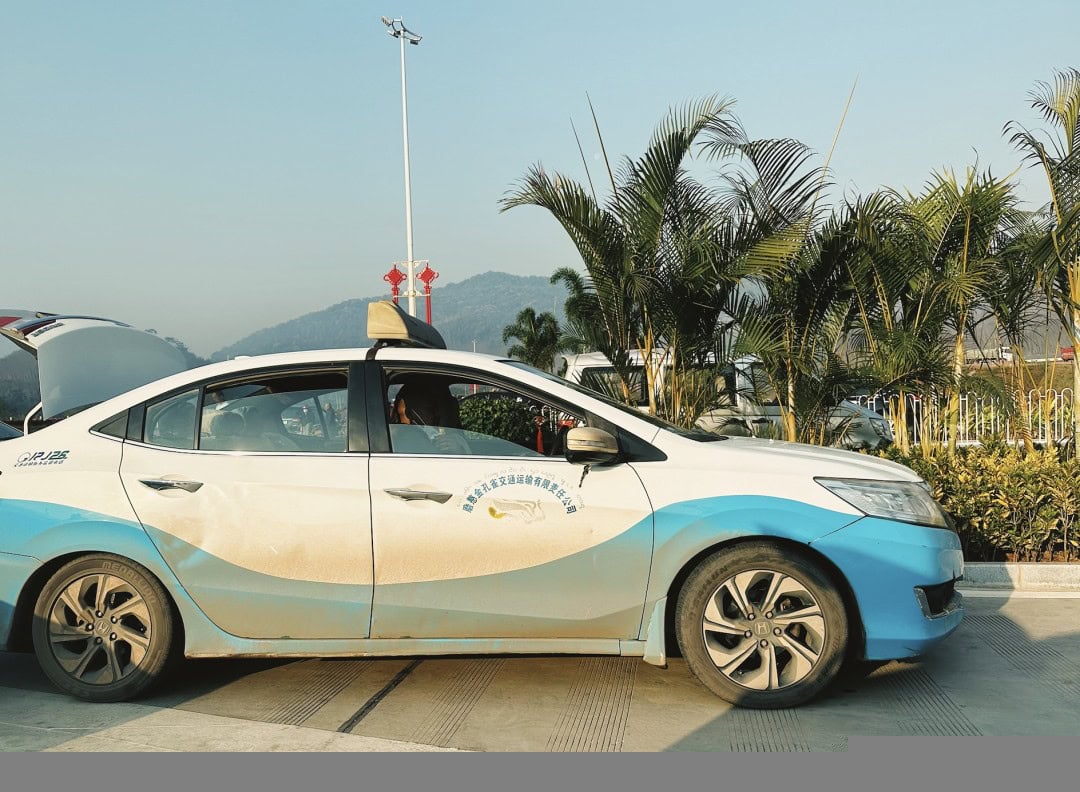
At the border, you fill out the customs entry and exit declaration on WeChat, and then proceed to exit. The efficiency of the Mohan exit process is superb, and the queues are quite orderly.
Just one tip: Avoid exchanging money and buying SIM cards at Mohan; the cost performance is low. It’s significantly cheaper to do this on the Laotian side at Boten.
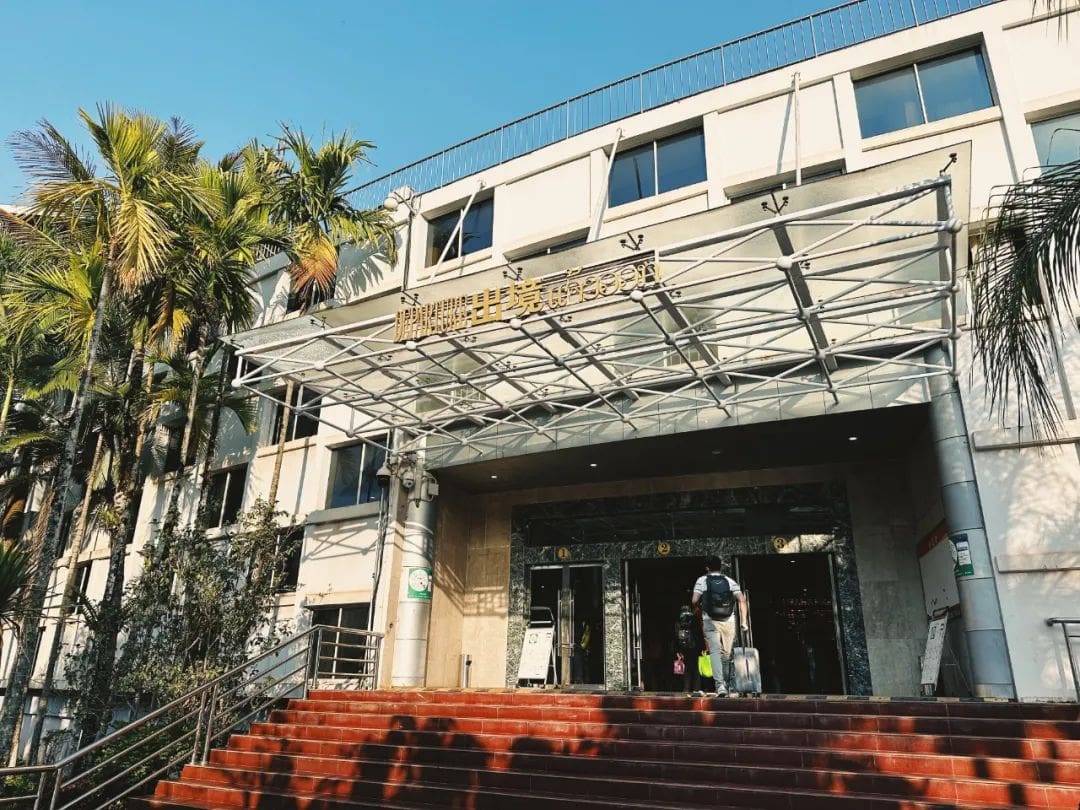
After exiting China, there is a dirt road roughly 300-400 meters long from Mohan Border to Boten Border in Laos. If you’re dragging a suitcase, you can pay 5 yuan for an electric cart ride. Then you’ll arrive at the Boten Border in Laos.
Here, the efficiency starts to drop.
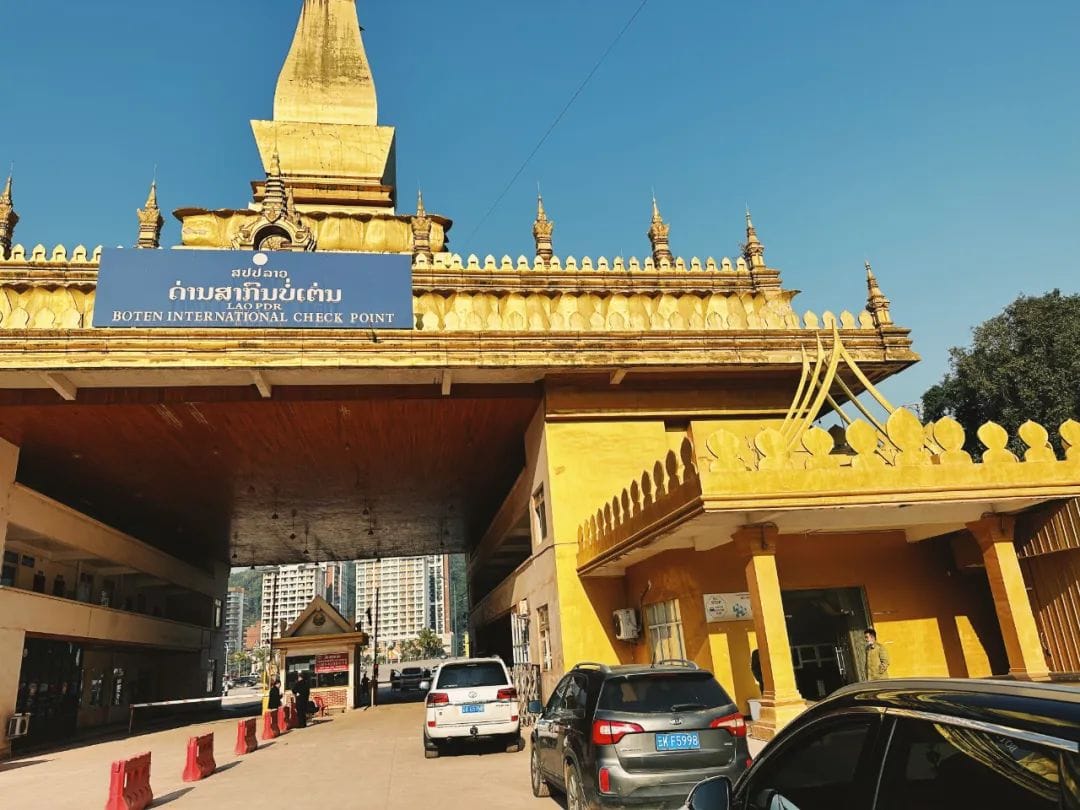
Right at the entrance of Boten, there is a spot selling Lao SIM cards for 30 yuan for 15GB. It’s recommended to buy one, which should be sufficient for a week’s stay in Laos.
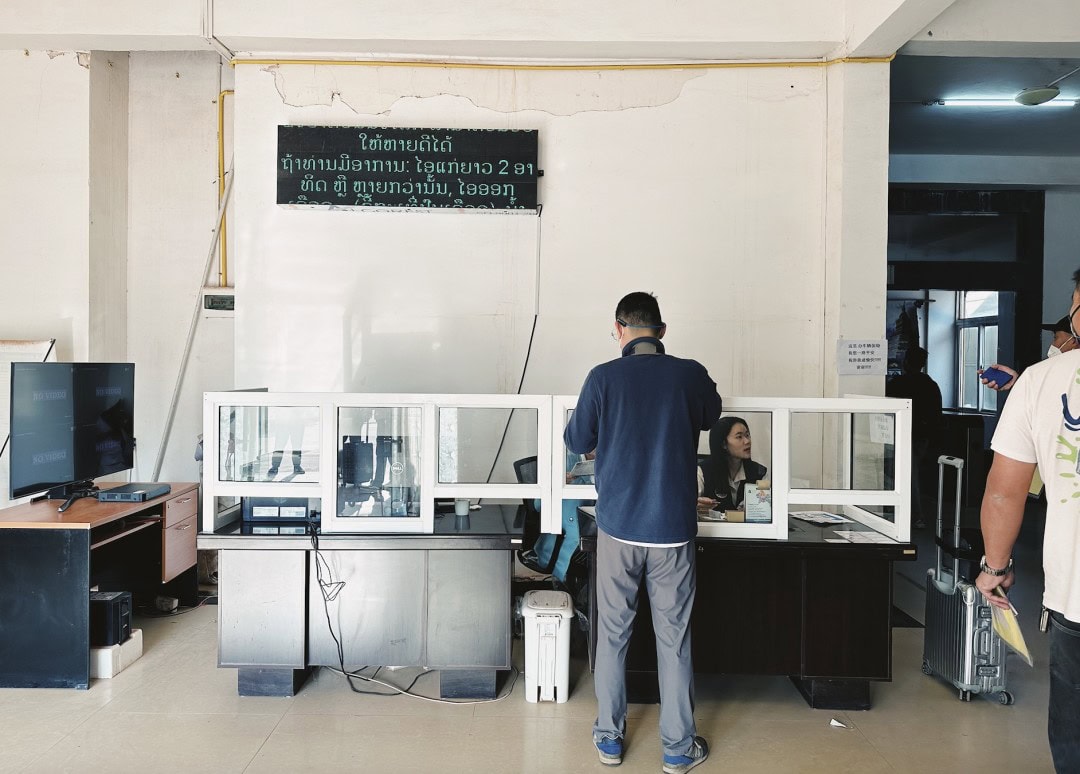
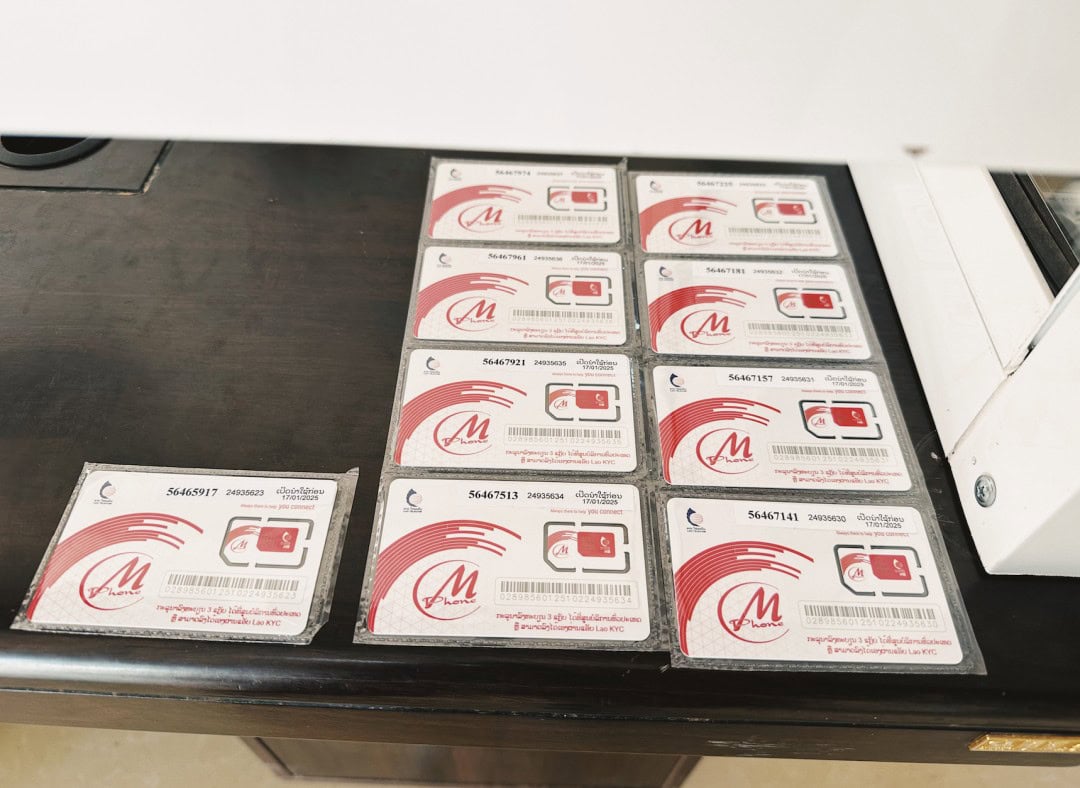
Photography is prohibited inside the border area, but compared to the Mohan side, the Boten border in Laos is much messier, and filling out the visa-on-arrival application form can be quite challenging. It is said that slipping 20 yuan into your passport can get you out of filling the application, but I didn’t try that.
Since I already had my visa, I skipped the form-filling hassle.
I exited in 5 minutes, but many other Chinese travelers who took the high-speed rail reportedly took over an hour to get through.
After exiting the border, there are places to exchange money where the exchange rate is much better than in China. You can share a ride to Boten high-speed rail station for 50,000 Lao Kip or 20 yuan.
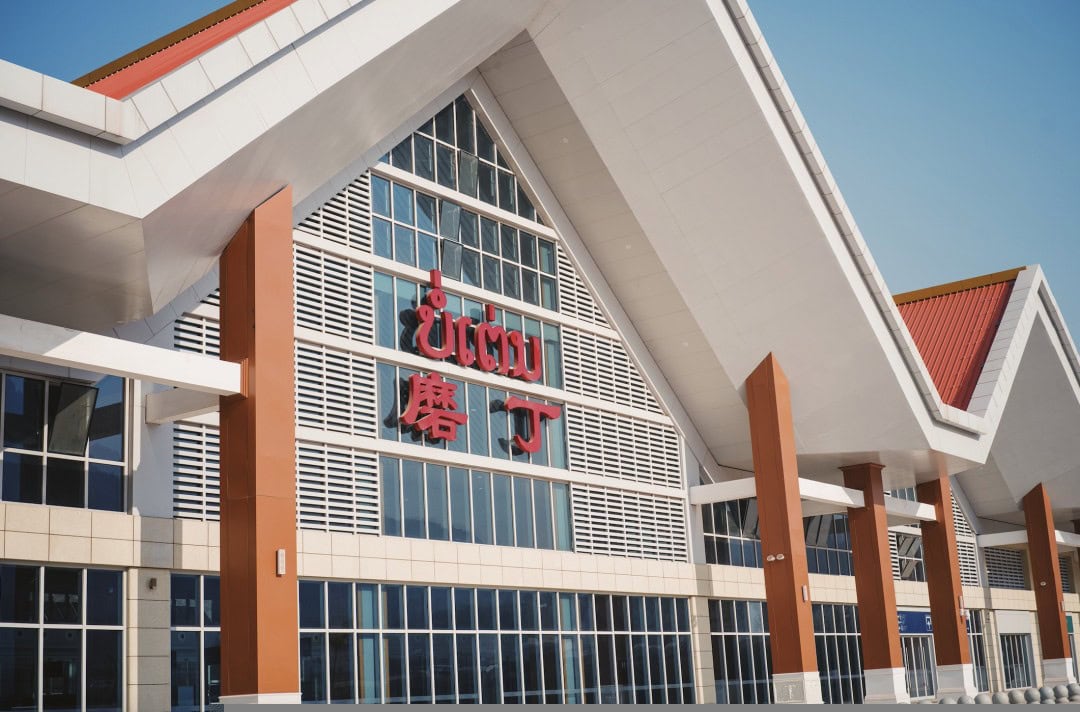
Efficiency is also lacking at Boten high-speed rail station; you have to queue to buy tickets. The queues are long and time-consuming.
I didn’t queue because I had asked a Lao agent to buy the tickets in advance. Each ticket came with a 40 yuan service fee. The agent arranged for a Lao guy to hand over the tickets at the Boten station.
Avoiding the queue was just part of it; the main worry was that after queuing, the desired train tickets might be sold out. Yesterday, after a short queue, the 12:15 train was sold out, and people could only buy tickets for the slower 2 PM train. Recently, there have been too many Chinese people taking the high-speed rail to Laos.
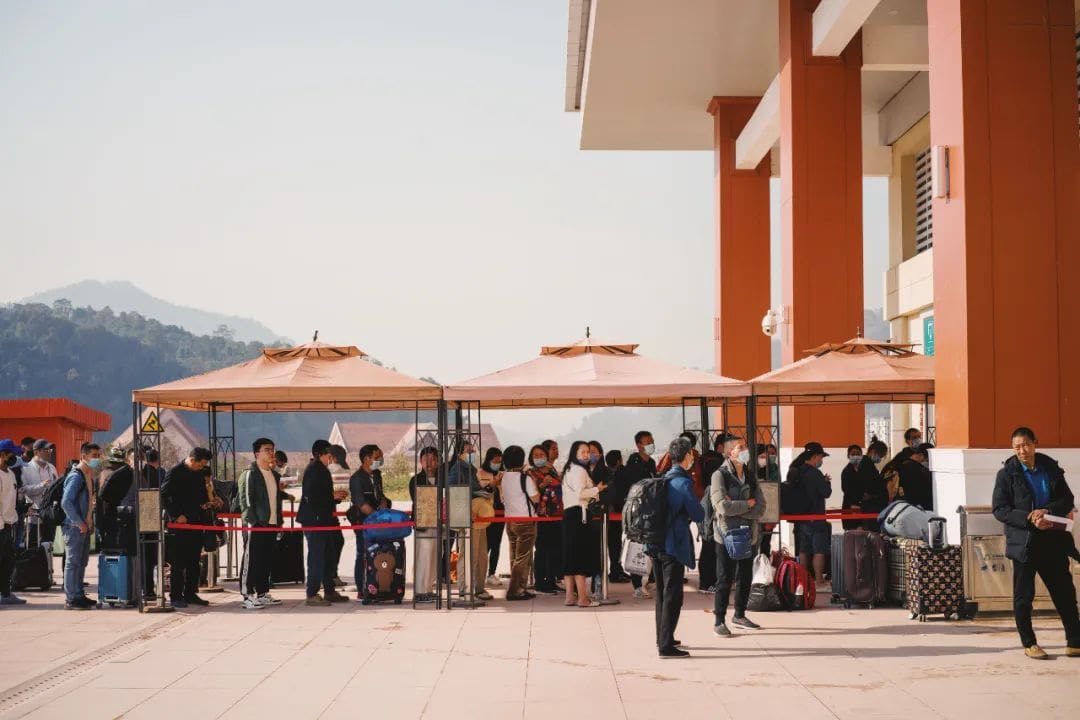
Lao high-speed rail tickets are quite cheap. A second-class ticket from Boten to Luang Prabang costs 169,000 Lao Kip, which is a little under 70 yuan.
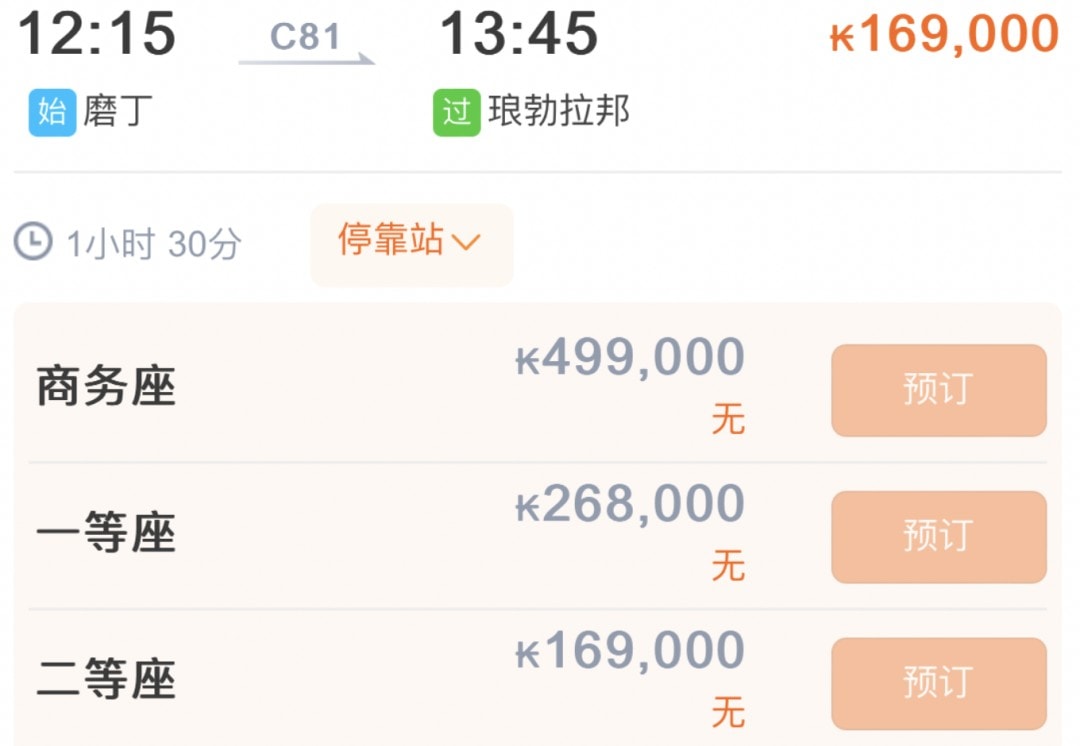
Here’s a tip: If you really can’t get tickets to Luang Prabang, buy tickets to Na Doi or Muang Sai, then you can buy additional tickets onboard (though you might have to stand for the latter part of the journey).
Na Doi and Muang Sai are stations before Luang Prabang.
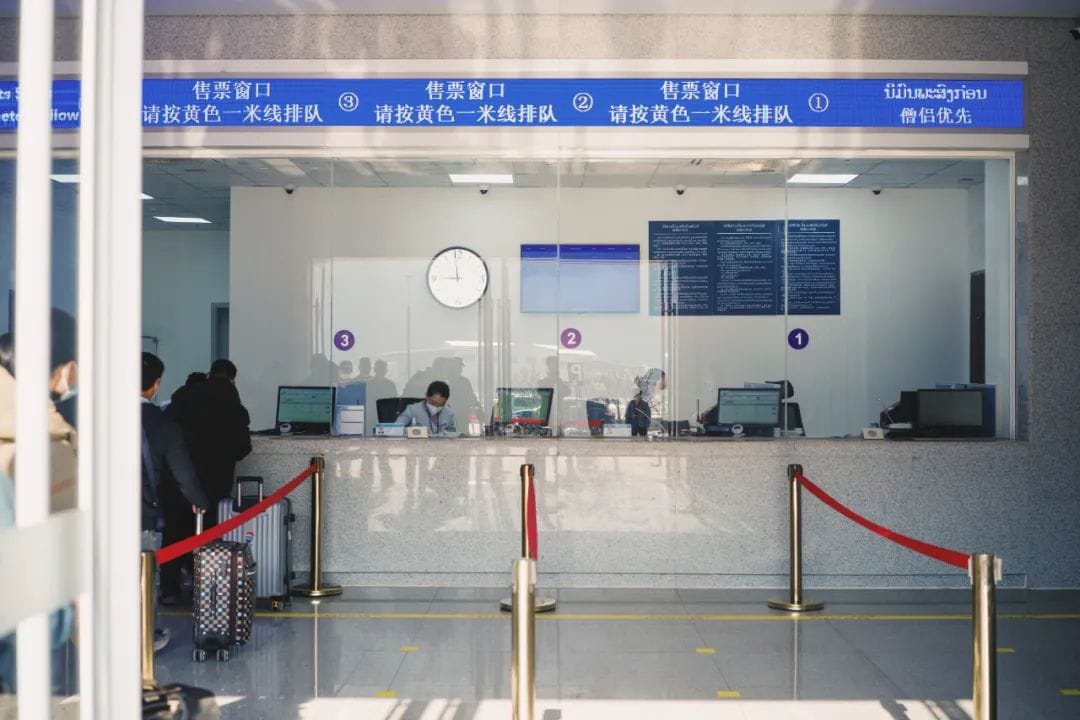
Look at the crowd taking the high-speed rail to Luang Prabang!!! Isn’t it shocking??? The 12:15 train we were on was completely full with eight carriages.
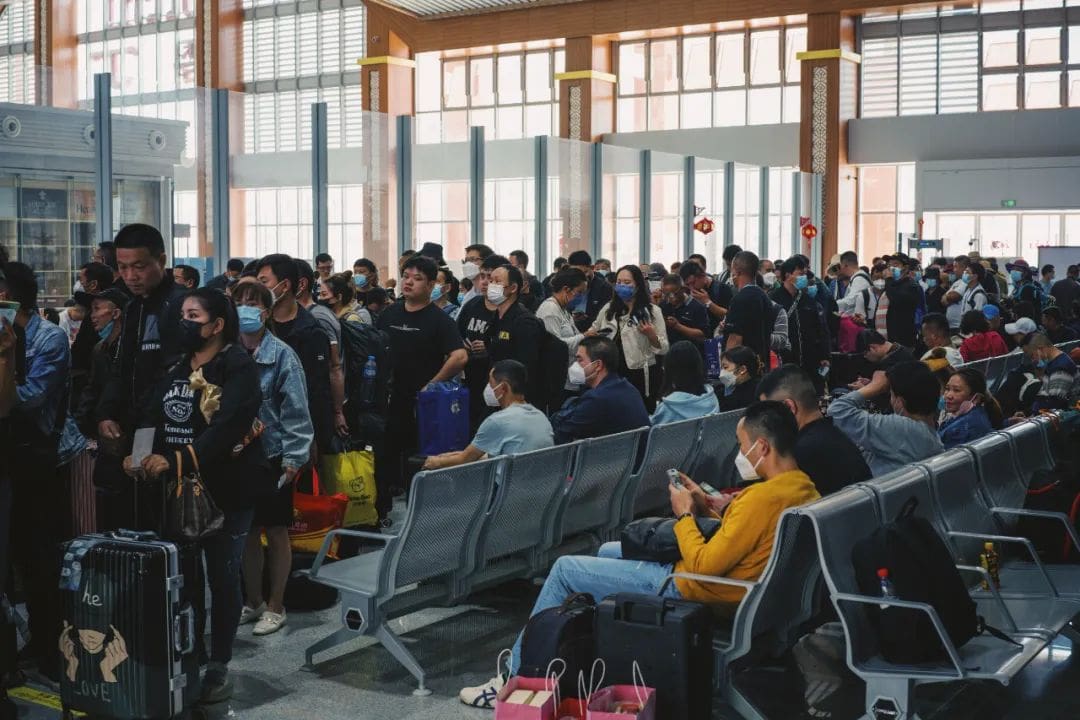
The high-speed rail in Laos is called the Lancang. It bears a 99% resemblance to China’s high-speed rail, after all, it was built by China.
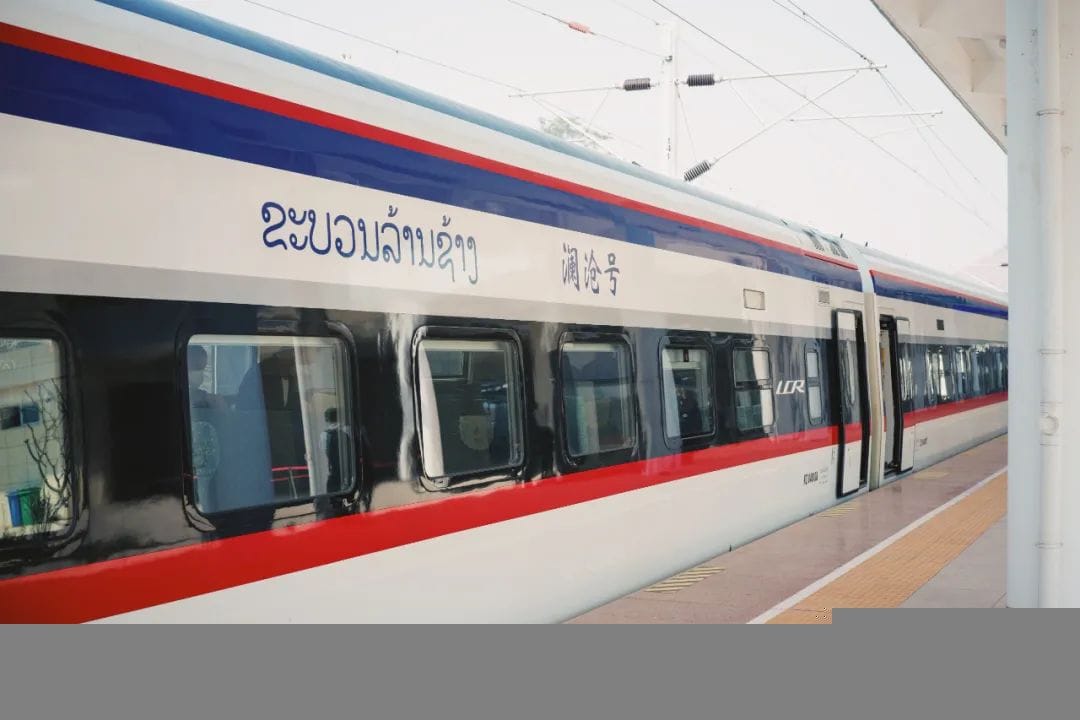
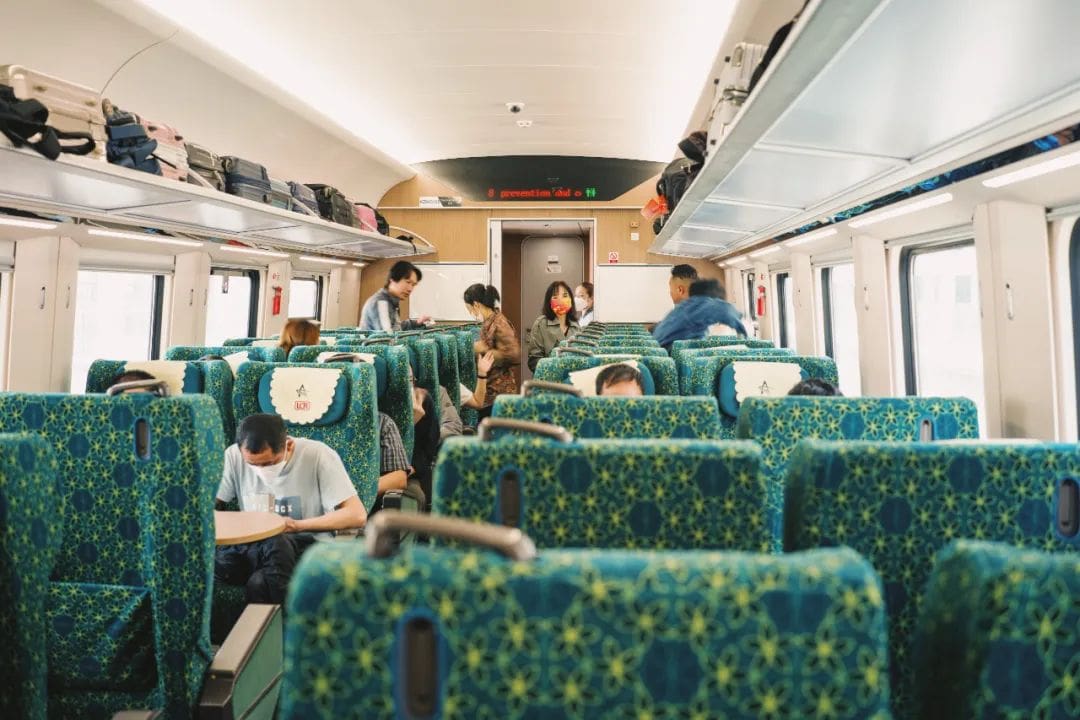
When you arrive at the Luang Prabang High-Speed Rail Station, there will be a shared car available to take you into the city. It costs 35,000 Lao Kip (approximately 15 RMB) and takes around 20-25 minutes to get you directly to your hotel.
As I was getting off the car, I overheard someone inside saying, “This is the best hotel in all of Luang Prabang~~~.”
They sure know their stuff; felt quite proud.
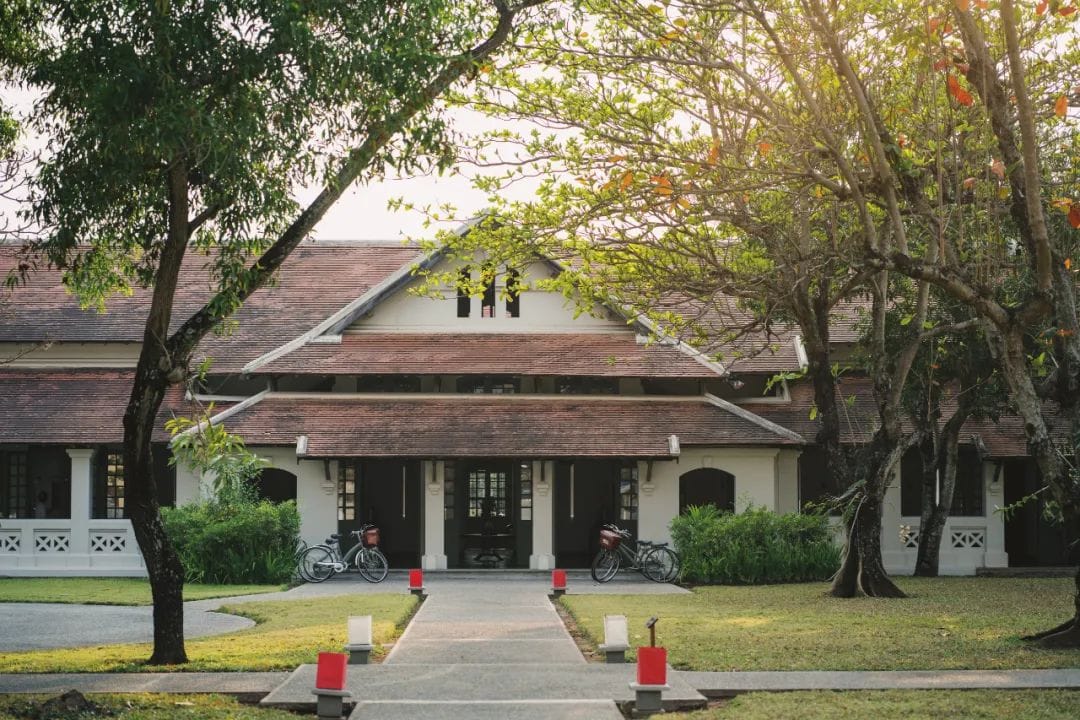
Total cost breakdown:
High-speed rail from Xishuangbanna to Mohan: 56 RMB.
Shared car from Mohan High-Speed Rail Station to Mohan Border: 20 RMB.
Shared car from the Boten Border to Boten Railway Station: 20 RMB.
High-speed rail from Boten to Luang Prabang (first class seat + booking fee): 150 RMB.
Shared car from Luang Prabang High-Speed Rail Station to the hotel: 15 RMB.
Laos visa: 250 RMB.
Total travel cost: 511 RMB.
Savings were spent on staying at Amantaka.
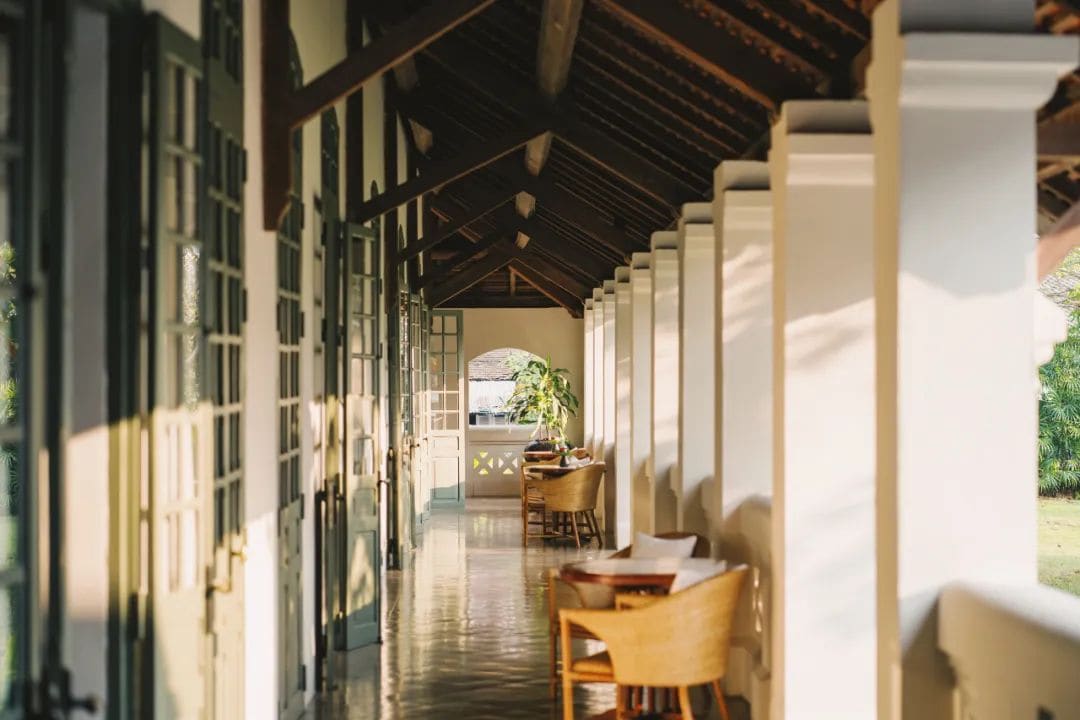
Some tips:
It is advisable to get your visa in advance to avoid wasting time at the border.
If you plan to take the same route, consider booking your tickets through an agent in advance. If the train you want is sold out, you could end up wasting time.
Bring some snacks, as the commercial areas on both sides of the border have not fully recovered, and you might not find much to eat along the way. I prepared meticulously for this trip, but the one thing I overlooked was ensuring I had enough food.
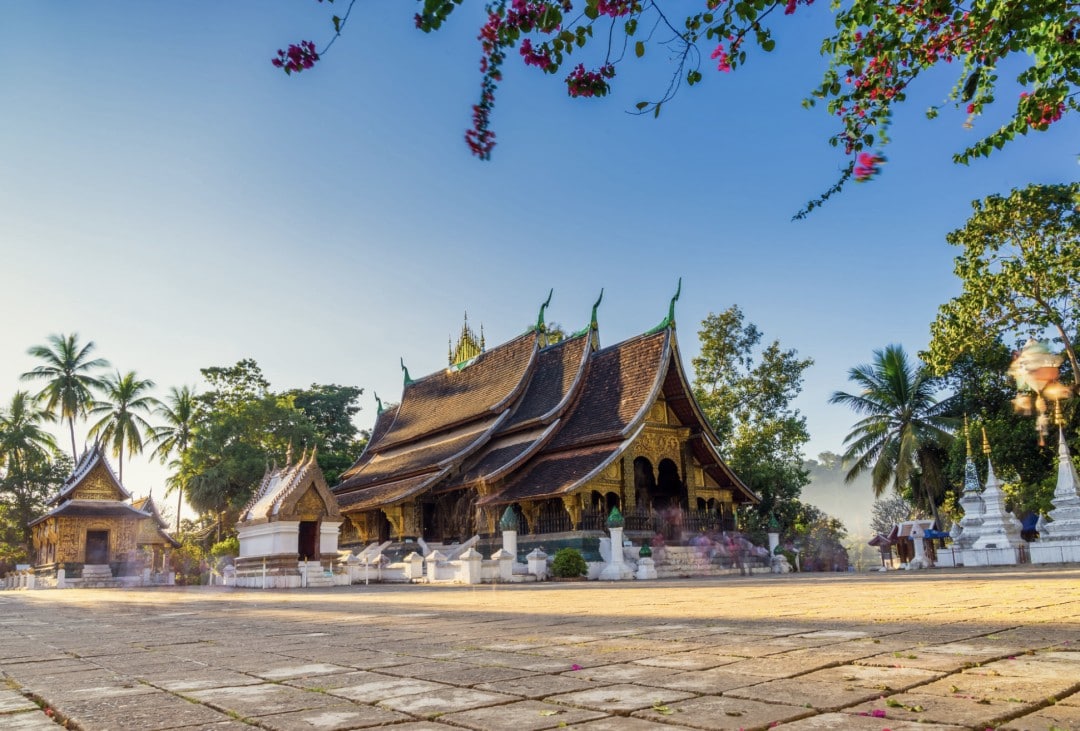
Oh, and by the way, Amantaka is unbelievably fantastic. In a few days, I’ll definitely share more in-depth recommendations with everyone.

If you enjoy traveling, don’t forget to follow and pin my public account!
I’m Rapid Cai Cai, the curator of the Xiyou public account and a travel blogger.
I specialize in combining travel with aviation, hotels, and credit cards.
Make Your Travel Smarter!


